
I'm Isaac, an industrial designer who has specialised in healthcare and consumer applications. Working collaboratively with diverse, multidisciplinary teams, I strive to create novel experiences that improves lives.

I'm Isaac, an industrial designer who has specialised in healthcare and consumer applications. Working collaboratively with diverse, multidisciplinary teams, I strive to create novel experiences that improves lives.

Ultrasound is a versatile early disease detection tool, providing real-time dynamic views of major organ systems. Being a safe method for visualising these internal structures, it plays a pivotal role in facilitating accurate diagnoses, guiding treatment decisions, and monitoring disease progression. The imaging capability of ultrasound allows healthcare professionals to examine the body’s internal organs, tissues, and blood flow with remarkable precision. From this, it is estimated that over 30% of all clinical cases that are presented at a healthcare centre requires a diagnostic tool, in which 90% of this proportion can be sufficed by an ultrasound.
Ultrasound can significantly improve patient outcomes, reducing the need for more invasive diagnostic procedures, and ultimately enhancing the quality of healthcare delivery.
However, throughout the world there are significant barriers to ultrasound accessibility, primarily due to the lack of trained ultrasound specialists readily available, alongside high upfront costs, and poor repairability, making the adoption of ultrasound for many local healthcare centres non-viable. The redundancy of this technology has led to devastating consequences for world healthcare, as seen in 2020 approximately 287,000 women died of child-birth related complications, in which many of these deaths could have been prevented with regular trimester scans.
Echo aims to expand access to ultrasound, allowing individuals with no background in ultrasonography collect clinically useful ultrasound scans. Advancements in imaging technology paired with artificial intelligence has shown that non-experts can use an easy-to-teach operating procedure called a ‘blind sweep protocol’ to perform just as well as a trained ultra sonographer in determining important information like gestational age and foetal presentation during an obstetric ultrasound examination. This has the opportunity to empower midwives, frontline health workers, or others to quickly gain important health insights based on ultrasound images.

Working in Collaboration
Echo ultrasound devices are designed to fit a range of healthcare users, spanning from non-specialised professionals such as midwives and nurses to highly trained ultra sonographers. This has been to ensure there is a level of equitable access to these devices.
Following discussions with clinical application specialists regarding the need for new ultrasound devices, it had been uncovered that many healthcare settings within the UK lack portable equipment that is easy to use, affordable and quick to repair, reducing the delay in seeing patients.
This project had been concepted through the collaboration of UK sonographers and midwives, looking to contribute to the WHO’s sustainable development goal [3]. Echo is intended to be launched in the UK market, yet spanning into further territories with the goal of serving low-resource settings, in that Echo has been designed for in mind.
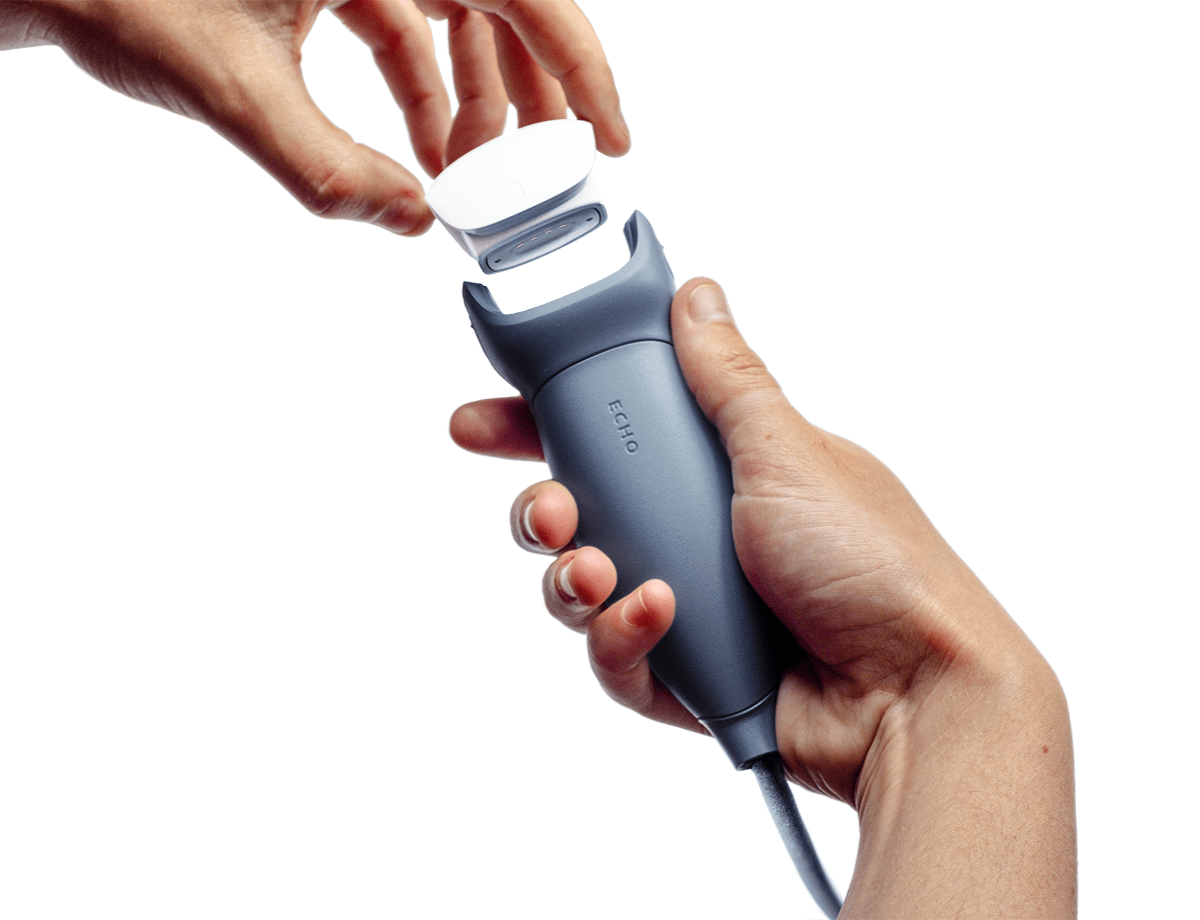
Repairability and Maintenance
The issue of repairability and maintenance in medical devices is a significant concern in the healthcare sector. Many modern medical devices are designed with proprietary components and software, making them difficult to repair and maintain without specialised knowledge or tooling.
Echo overcomes such problems through embracing a modular design. Ultrasound lens and transducer components are the most prone to damage and typically mean that when broken, the whole device is to be discarded. Through innovations in CMUT [Capacitive Micromachined Ultrasound Transducer] technology and advancements in hardware integration, the entire ‘transducer head’ can now be removed and replaced; recycling its electrical componentry. Compared to traditional, more expensive PZT, CMUT is a cost-effective solution that allows the replacement of these parts, with manufacturing capable of keeping up demand and ensuring uninterrupted use.
Throughout the project, various stages of concept ideation explored the physical and digital device interactions and mechanisms. The objective had been to create an ergonomic hand-held device, that is capable of blending together industrial design aesthetics with engineering constraints to produce a feasible solution.
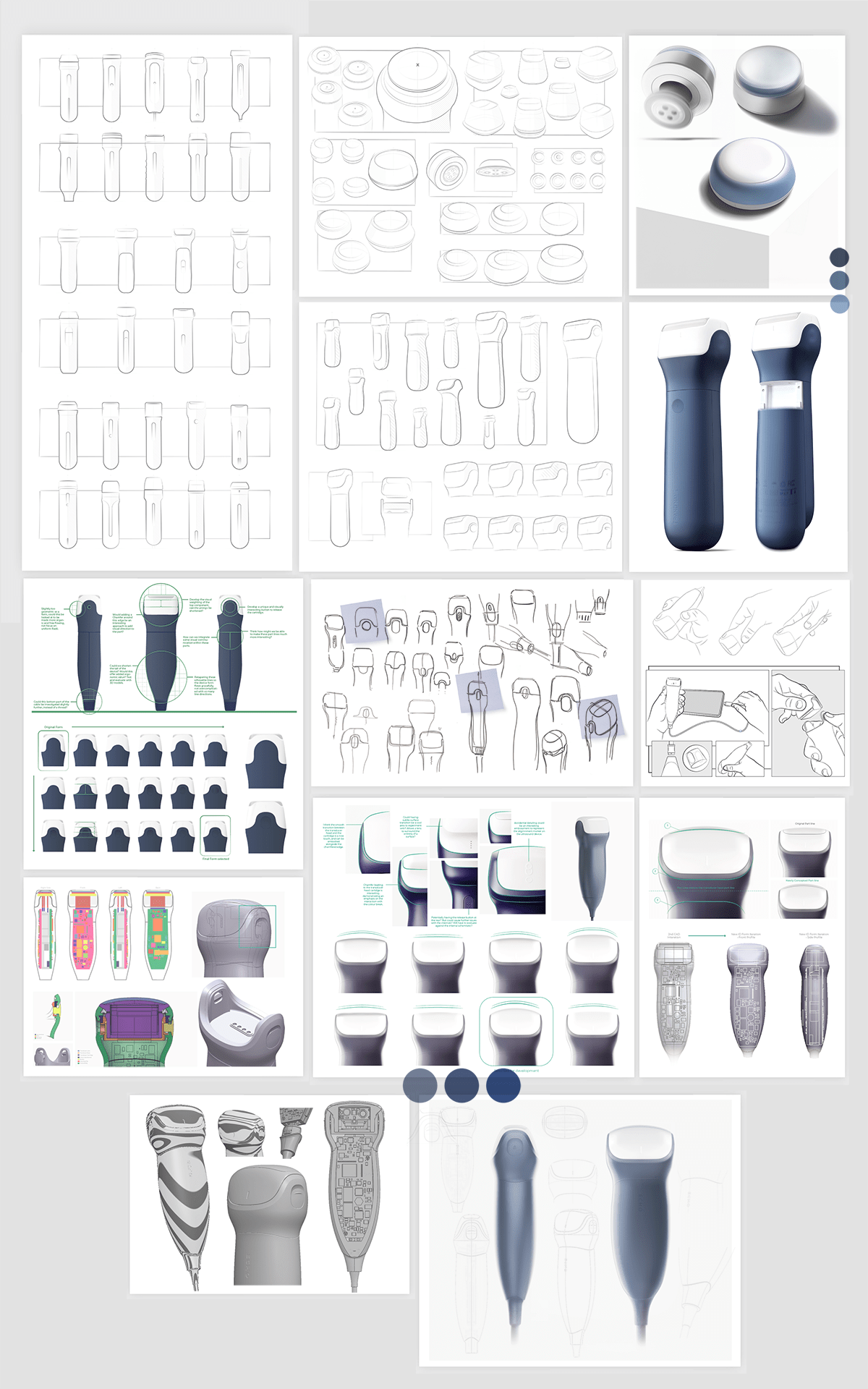
Concept Ideation
Sketch ideation of an array of initial concepts led to the refinement of form and direction, embodying engineered components and insights from model prototyping.
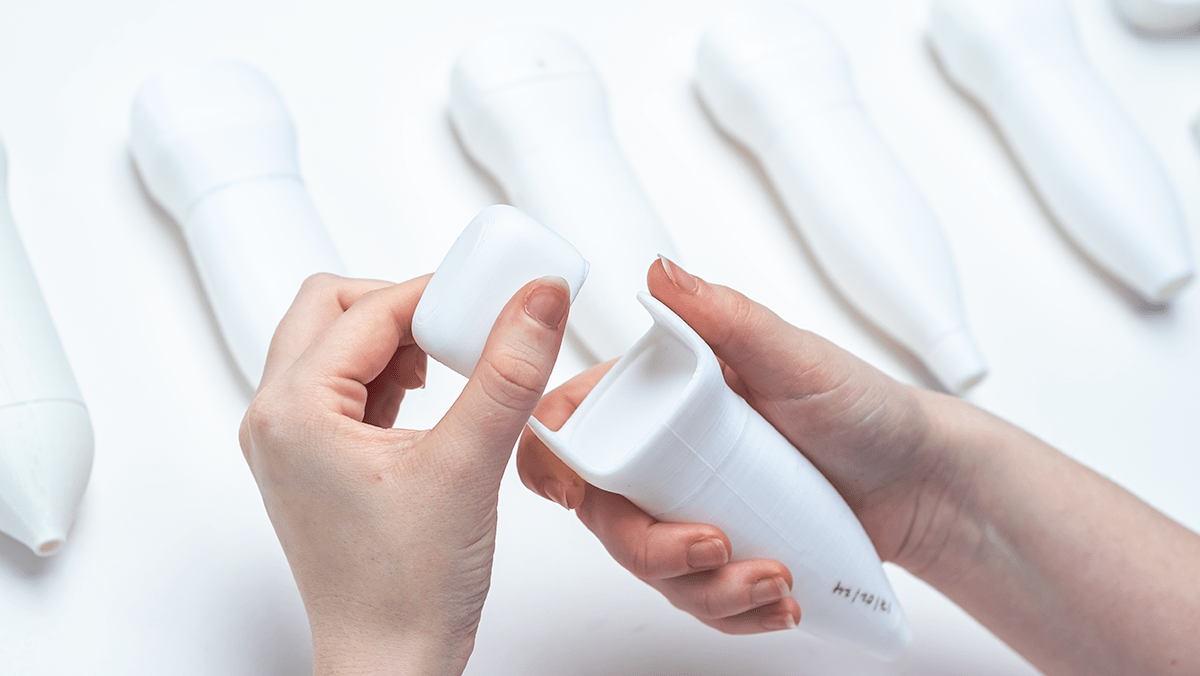
Interactive Model Prototyping
Several rounds of model prototyping explored physical interactions that would later be developed in producing a working mechanism to remove modular components, such as the transducer head and cable wire. This achieved ergonomic handling as well as a specified form for electrical components to be integrated.
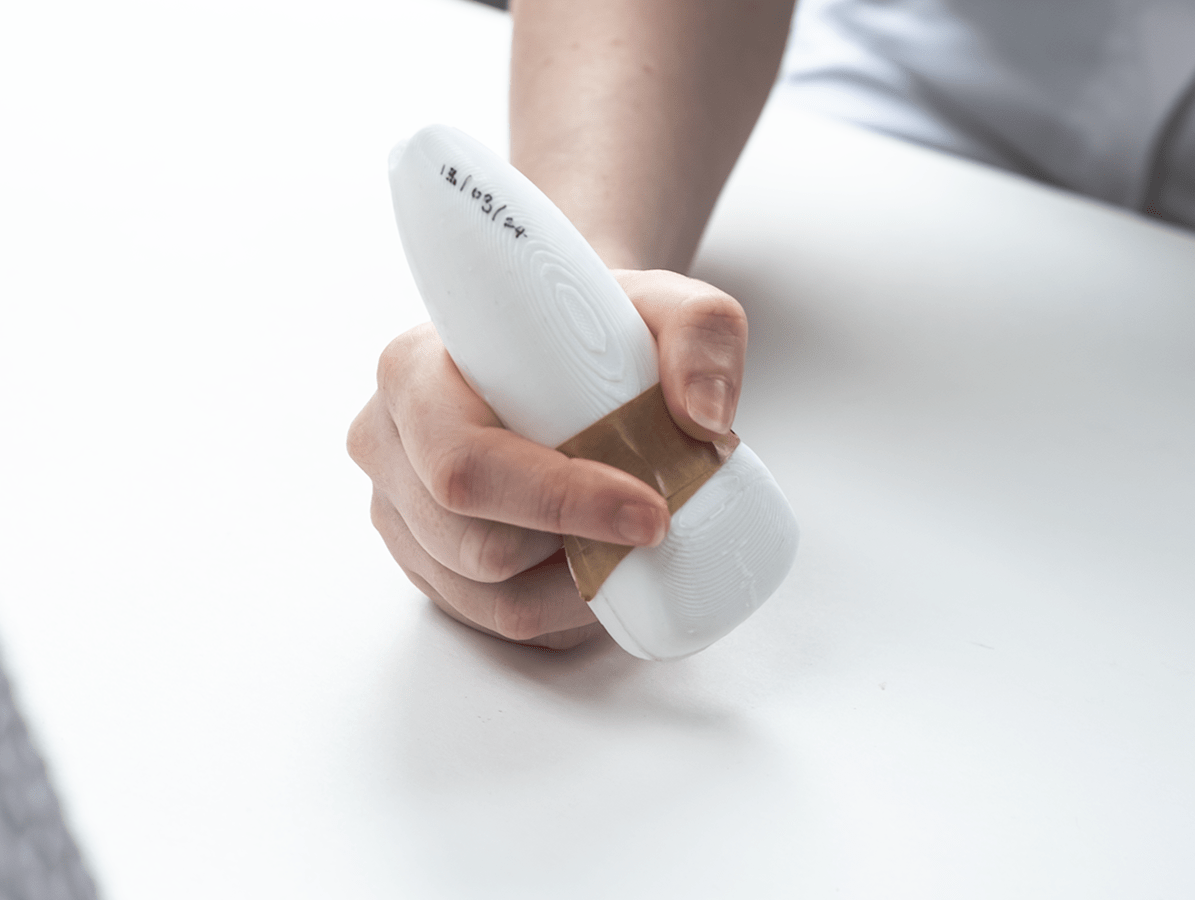
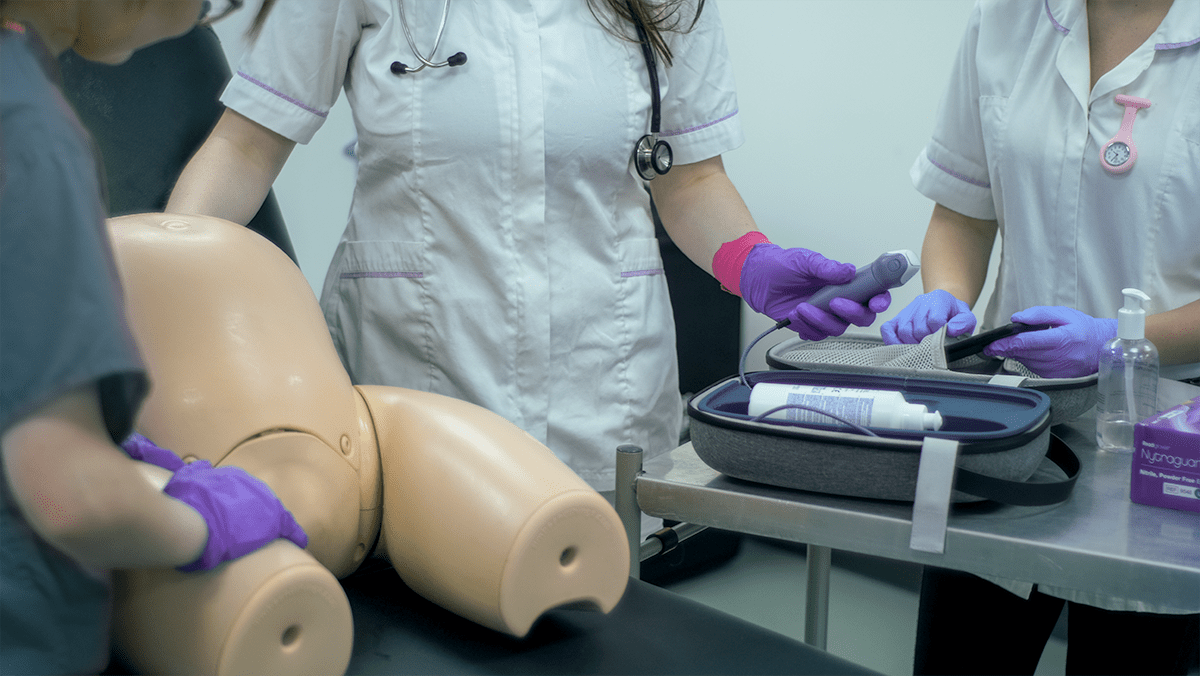
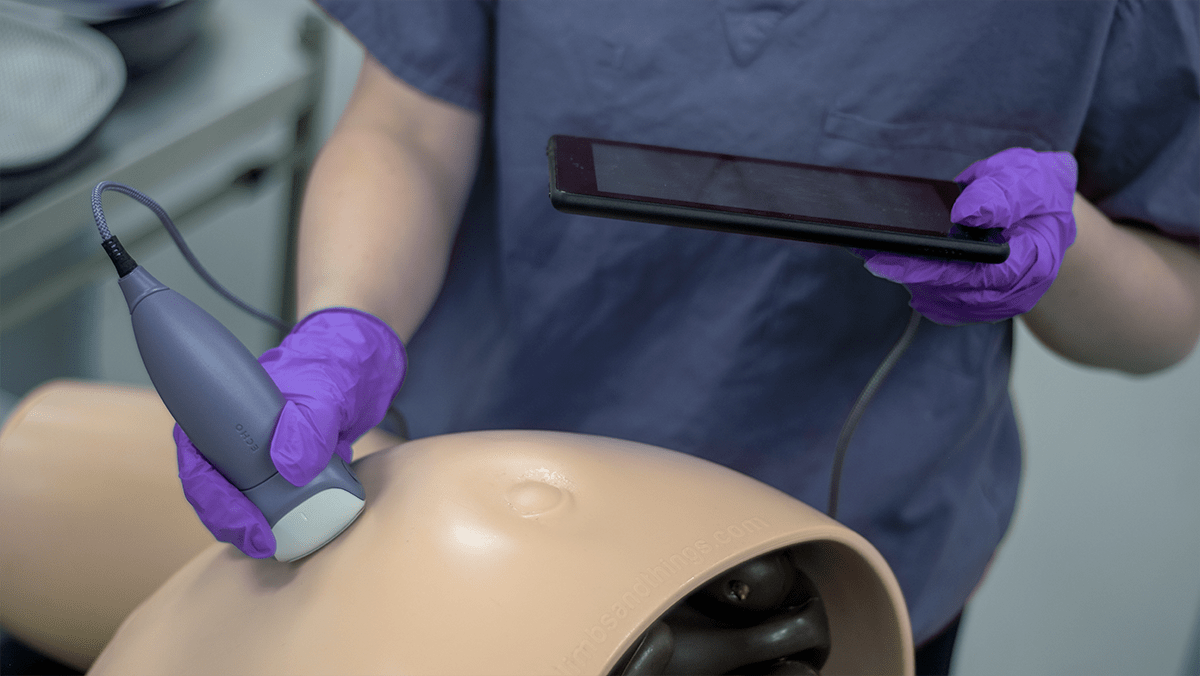
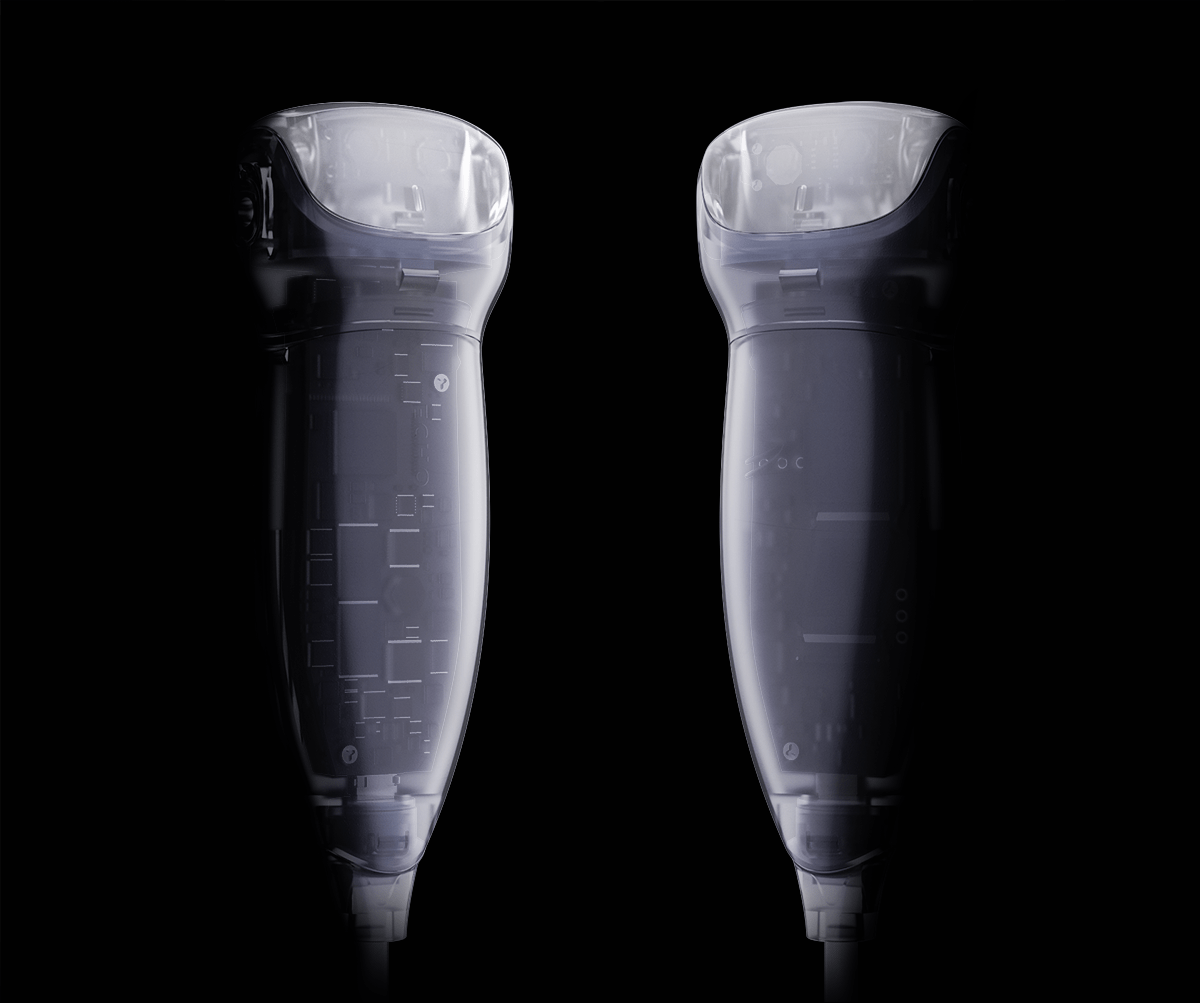
Transparent view of Echo’s integrated componentry.
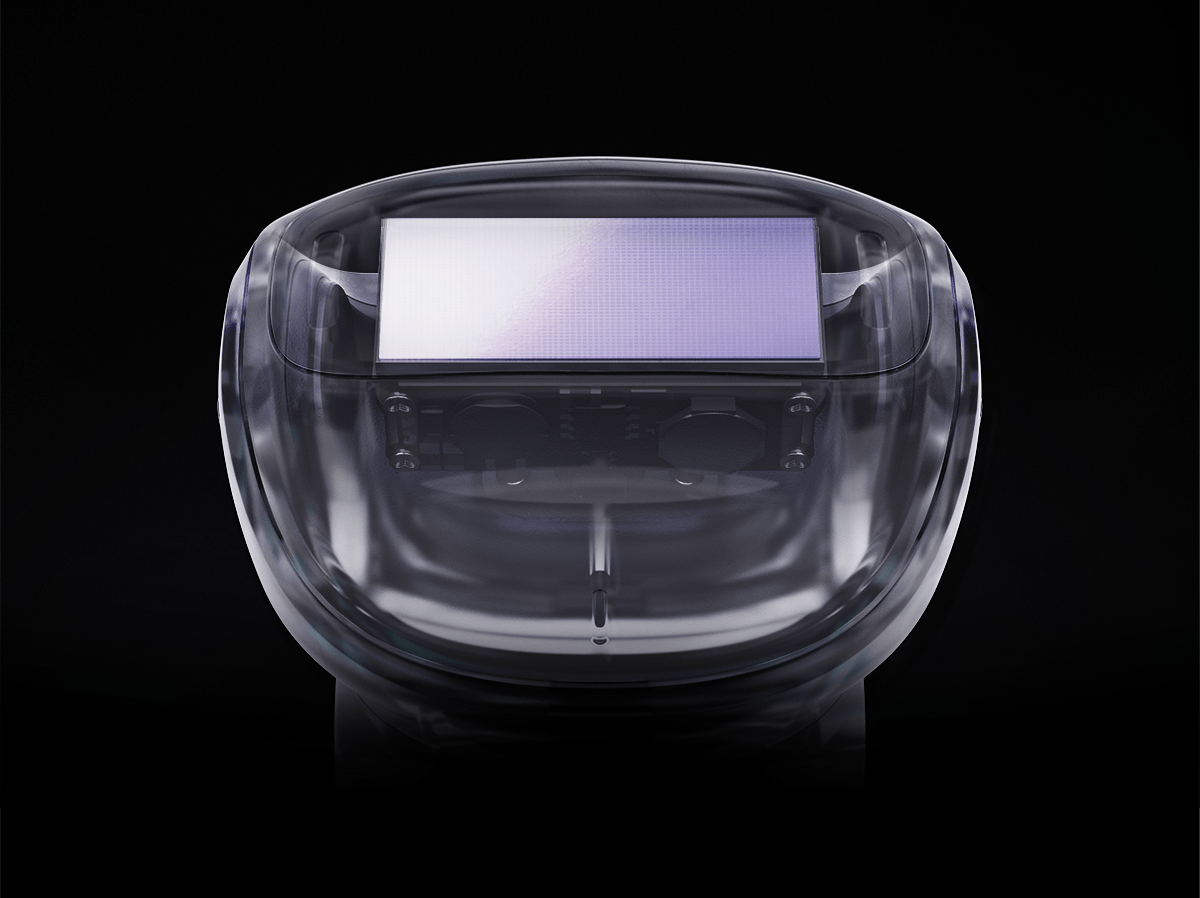
CMUT chip-on-tip component presented below the transducer lens.
Animation displaying an x-ray cutaway of Echo’s internal components.